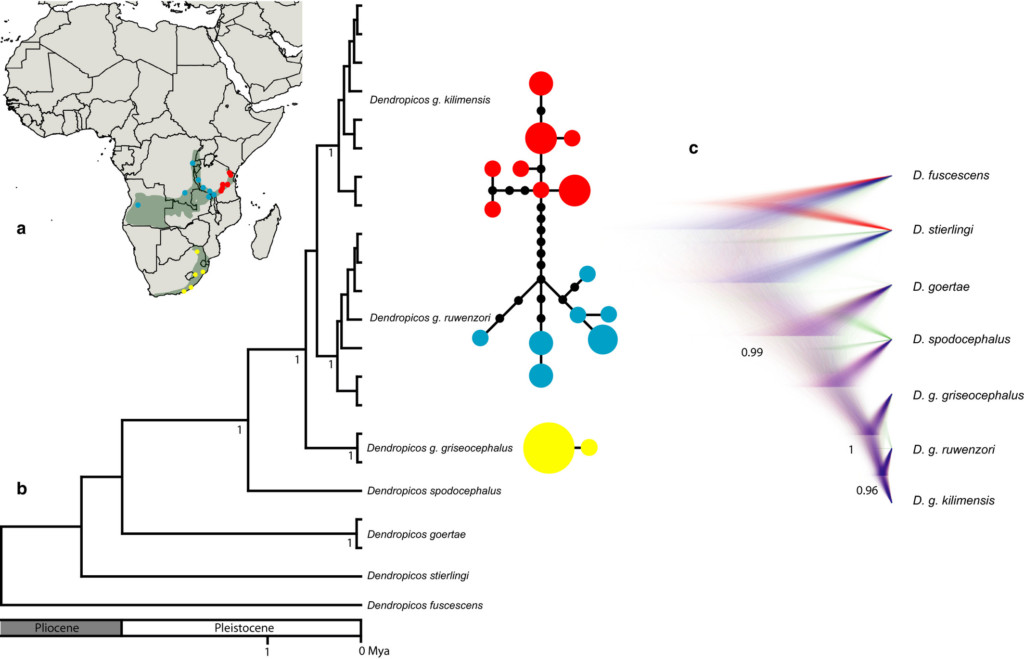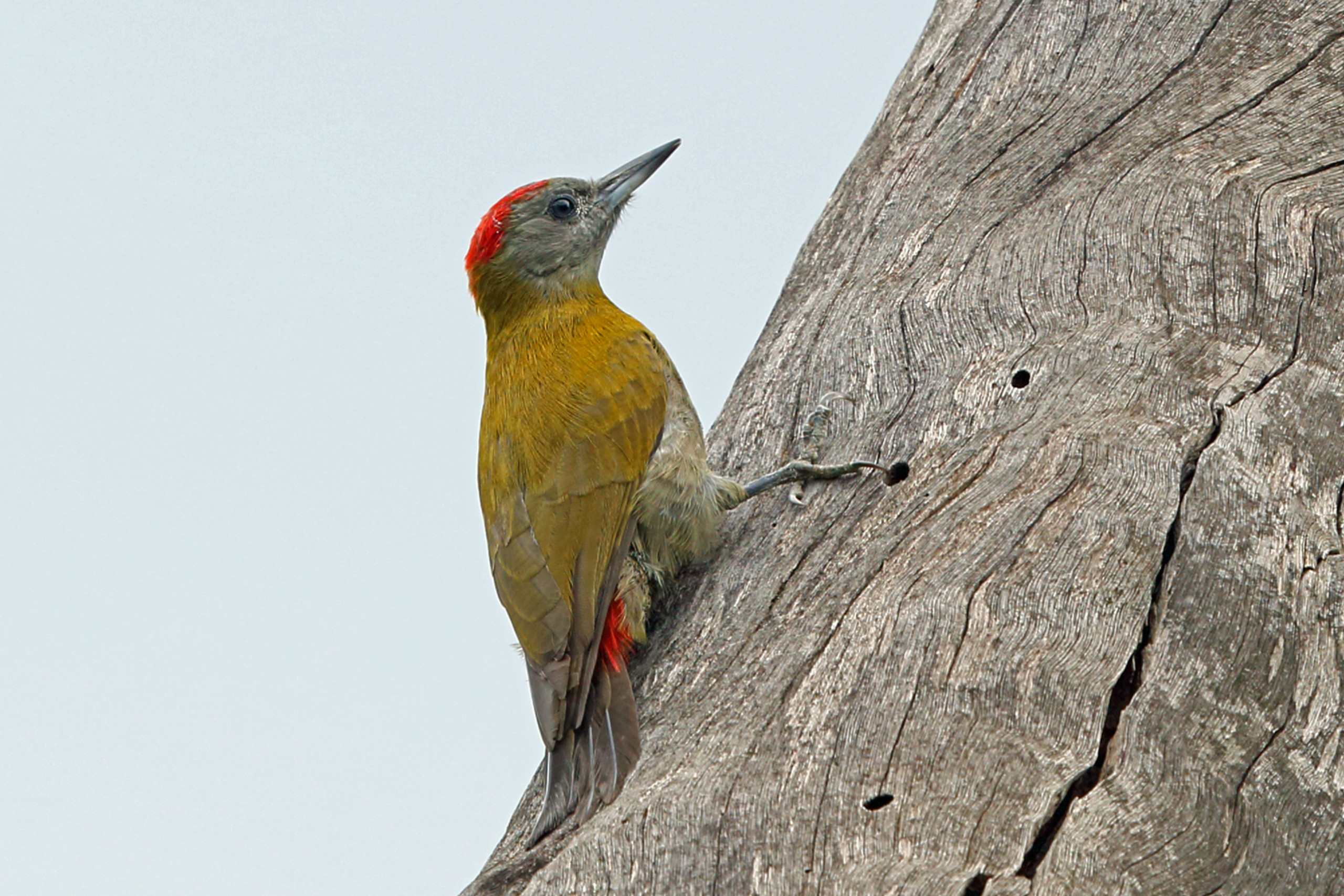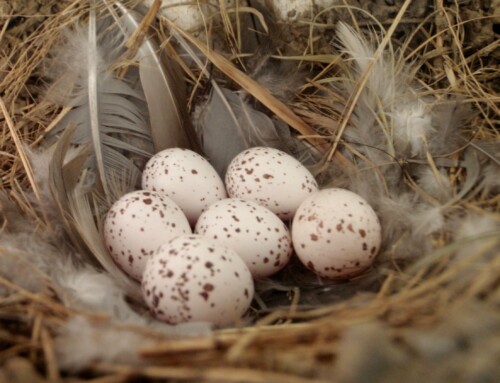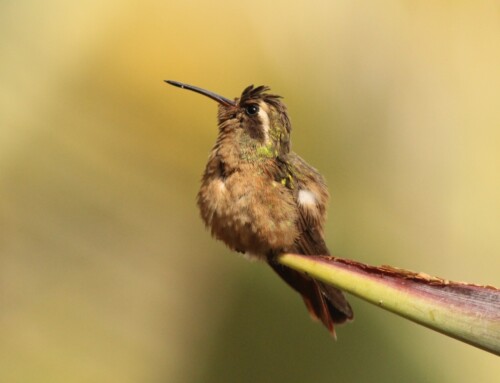 LINKED PAPER
LINKED PAPER
Phylogeographical history of the Olive Woodpecker Dendropicos griseocephalus, a species widely distributed across Africa. Fuchs, J., Bowie, R. C., Melo, M., Boano, G., Pavia, M., & Fjeldså, J. 2021. IBIS. DOI: 10.1111/ibi.12875. VIEW
For centuries, scientists have been trying to classify the living world into clearly delineated categories that they call species. However, the origin of a species is a gradual process that typically takes thousands to millions of years. Some groups of organisms might be in the middle of this process and cannot be easily classified. These cases are in a taxonomic ‘grey zone’ and often result in fierce debate between taxonomists (Roux et al. 2016). Depending on which criteria you prioritize, you might come to different conclusions. For example, some organisms might have already evolved morphological differences, while the genetic differentiation is minor. Here, a morphological approach will uncover distinct species, whereas a genetic analysis will not. In recent years, taxonomists attempt to resolve these troublesome cases with an integrative approach in which they use multiple lines of evidence to justify a taxonomic decision (Padial et al. 2010).
Plumage patterns
The Olive Woodpecker (Dendropicos griseocephalus) seems to reside in the taxonomic ‘grey zone’. This African species is currently divided into three subspecies that differ in plumage patterns. The subspecies ruwenzori can be found across Central Africa and is characterized by the presence of a red patch on the abdomen and a golden-olive-colored mantle and breast. The Tanzanian Eastern Arc Mountains are home to a second subspecies (kilimensis) which lacks the red patch on the abdomen and has a more olive-colored plumage palette. Finally, the subspecies griseocephalus is endemic to South Africa and Mozambique. It resembles the subspecies kilimensis, but is slightly bigger and shows traces of a red patch on its abdomen. From a morphological point of view, taxonomists could certainly make a case for three separate species. But what about genetic differences?

Figure 1. Genetic analyses from samples across the range of the Olive Woodpecker (figure a) pointed to three distinct genetic groups (figures b and c) that correspond to the subspecies griseocephalus (yellow), ruwenzori (blue) and kilimensis (red).
Gene flow
Jérôme Fuchs and his colleagues compared the genetic make-up of 31 Olive Woodpeckers and uncovered three genetic groups that correspond to the three subspecies. But are these groups genetically isolated from each other? Previous work found no evidence for gene flow between the griseocephalus subspecies and the other two subspecies (kilimensis and ruwenzori), but could not discriminate between the latter two subspecies (Fuchs et al. 2017). These findings suggest that the griseocephalus subspecies is genetically distinct, while the remaining two subspecies might still be connected by occasional gene flow. Hence, based on the current knowledge, the researchers recommend to recognize two species: the Southern Olive Woodpecker (D. griseocephalus) and the Northern Olive Woodpecker (D. ruwenzori, which includes the subspecies kilimensis and ruwenzori). However, new data might lead to another arrangement. That is an unavoidable consequence of working in the taxonomic ‘grey zone’.
References
Fuchs, J., Pons, J.M. & Bowie, R.C.K. (2017). Biogeography and diversification dynamics of the African woodpeckers. Molecular Phylogenetics and Evolution 108: 88– 100. VIEW
Padial, J. M., Miralles, A., De la Riva, I., & Vences, M. (2010). The integrative future of taxonomy. Frontiers in Zoology 7(1): 1-14. VIEW
Roux, C., Fraïsse, C., Romiguier, J., Anciaux, Y., Galtier, N. & Bierne, N. (2016). Shedding light on the grey zone of speciation along a continuum of genomic divergence. PLoS Biology 12: e2000234. VIEW
Image credits
Top right: Olive Woodpecker (Dendropicos griseocephalus) | Nigel Voaden | CC BY-SA 2.0 Wikimedia Commons
Blog posts express the views of the individual author(s) and not those of the BOU.
If you want to write about your research in #theBOUblog, then please see here




